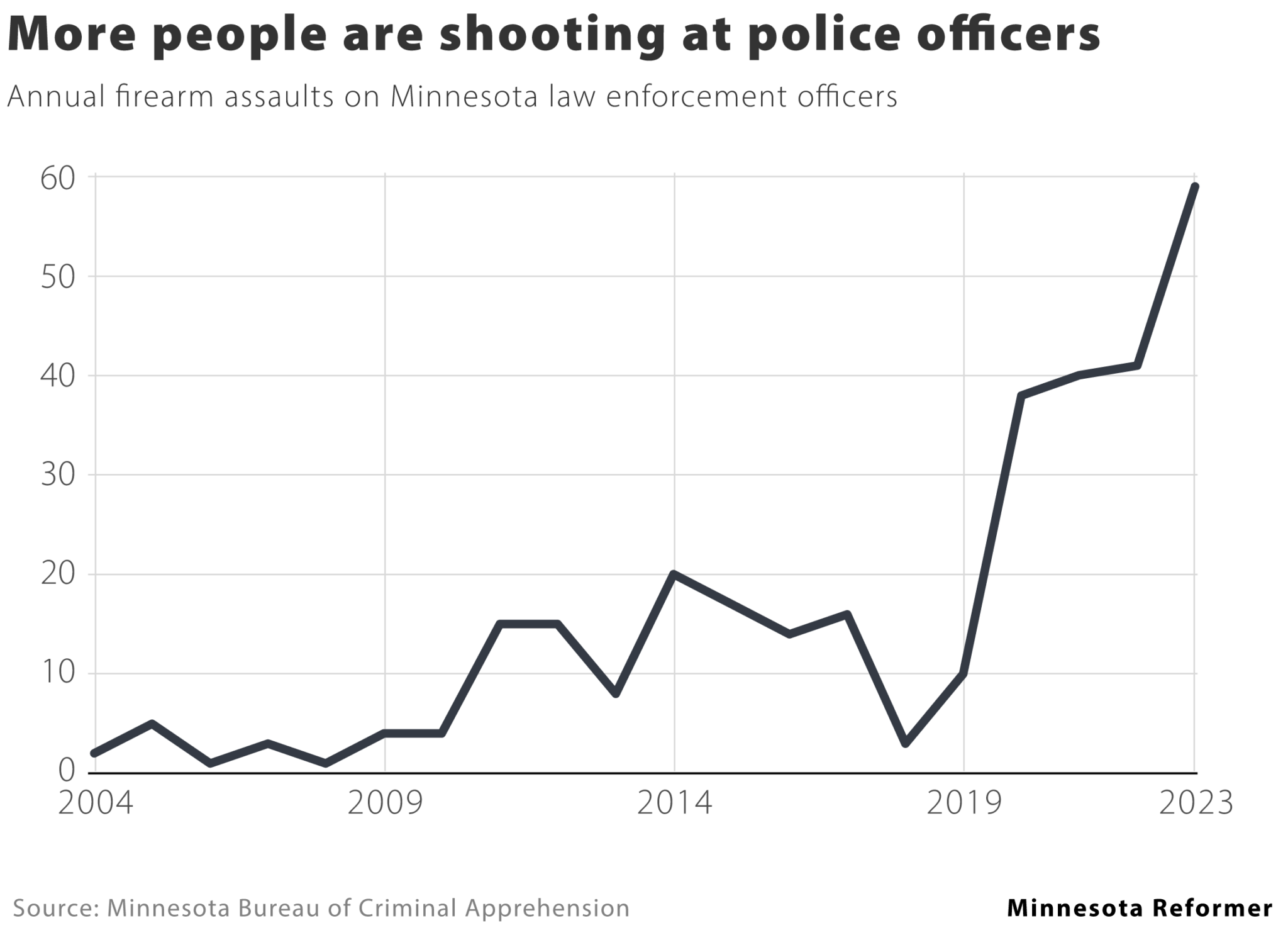By Christopher Ingraham, Minnesota Reformer
Violent assaults on police officers have risen sharply in recent years, according to the comprehensive data included in the Bureau of Criminal Apprehension’s Uniform Crime Reports. But those assaults rarely turn fatal: From 2004 to 2023 only 11 Minnesota police officers died in the line of duty, according to the BCA data.
That relative rarity is part of what makes the recent shootings in Burnsville, where a man fatally shot two police officers and a paramedic before turning the gun on himself, so shocking. It’s not the kind of thing that happens here.
In 2019, there were about 400 violent assaults on against Minnesota police officers, according to the BCA data. By 2023, those attacks had more than doubled, to more than 900.
Shootings of police officers, a subset of all violent assaults, have risen even more dramatically. Suspects fired guns at officers on 10 separate occasions in 2019, according to the BCA. Last year, according to preliminary data, there were 59 incidents involving suspects shooting at police.

As with so many different types of crime data, the trend shows a sharp inflection point in 2020. That was the first year of the COVID-19 pandemic as well as the year Minneapolis police officers murdered George Floyd, resulting in widespread rioting and unrest. Rising levels of violent crime, including assaults on officers, followed suit.
Most categories of violent crime are receding from their pandemic-era highs. But assaults on officers appear to be an exception: both shootings and other types of violent assaults rose between 2022 and 2023, according to the BCA data.
The increase in shootings, in particular, may reflect in part a surge in gun purchases during the pandemic. Some of those guns have by now made their way to the black market and into the hands of people who are prohibited from owning them. As a result, the typical criminal today may be more likely to carry a gun than in 2019, raising the odds that an encounter with police could turn into a shoot-out.
Data from the Minnesota Sentencing Guidelines Commission, for instance, show that the number of felony cases involving firearms increased by nearly 50% from 2019 to 2023.
The suspected shooter in Burnsville was banned from legally possessing guns, according to the Star Tribune’s reporting, and had unsuccessfully tried to get his ownership rights reinstated in August 2020. At the moment it’s not clear how he obtained the gun he used to kill two officers and a paramedic, what type of gun it was, or how he acquired it.
DFL lawmakers may consider a number of new gun control proposals this legislative session, including increasing the age to purchase semiautomatic rifles; magazine capacity limits; a safe storage bill; mandated reporting of lost and stolen guns; and an assault weapons ban.
The topic of felony gun possession was also on the 2024 legislative agenda prior to the Burnsville shooting, DFL lawmakers planning to introduce a bill that would eliminate the existing five-year mandatory minimum sentence for felons in possession of guns.
Minnesota Reformer is part of States Newsroom, a network of news bureaus supported by grants and a coalition of donors as a 501c(3) public charity. Minnesota Reformer maintains editorial independence. Contact Editor Patrick Coolican for questions: info@minnesotareformer.com. Follow Minnesota Reformer on Facebook and Twitter.







